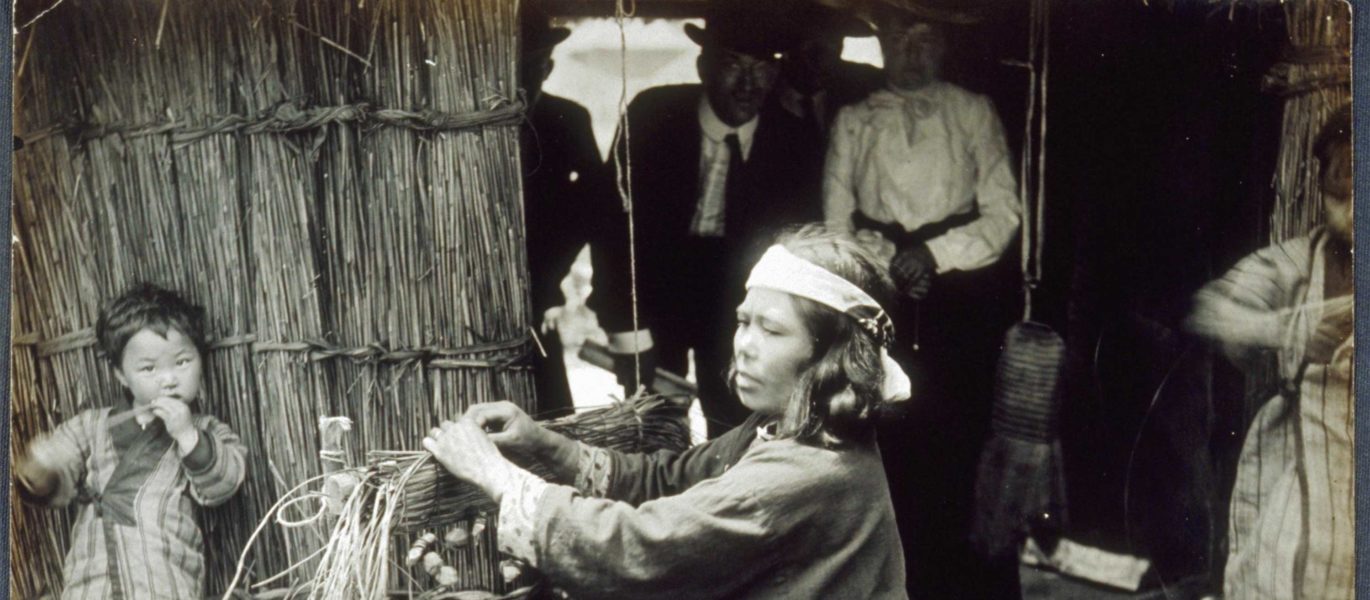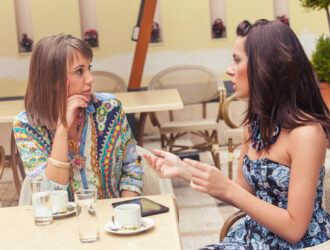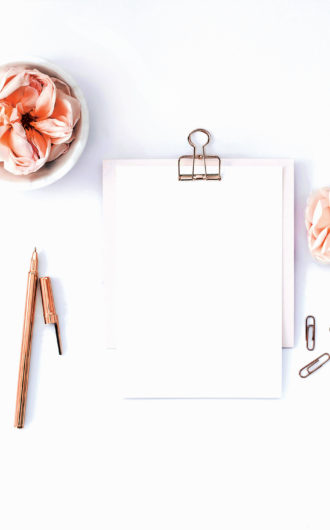After a yearlong renovation, The Schlesinger Library, housed at Harvard’s Radcliffe Institute for Advanced Study, has reopened this fall.
We’re particularly interested because the library holds one of the country’s largest and most significant collections for research on the history of women in America. Think such fascinating people with diverse interests as Amelia Earhart and Julia Child.
Established in 1908, the female-focused library was later named after noted feminist Elizabeth Bancroft Schlesinger and her husband, a history professor at Harvard.
Today, it boasts all types of materials. These are focused on and significant to women’s rights and feminism, health and sexuality, work and family life, education and professions, and more.
Among the renovations, “The exterior envelope of the Schlesinger will have fully repointed masonry and new glass entry doors opening onto Radcliffe Yard,” says project manager Kate Loosian. “Of these external changes, the most visible is the new entrance. [It’s] much more welcoming.”
What to See at This Female-focused Library
If you’ve never been to the female-focused library, a visit to the Schlesinger is a must. Do take a few hours to explore. To help you along the way and get a well-rounded experience, we suggest these five can’t-miss items.
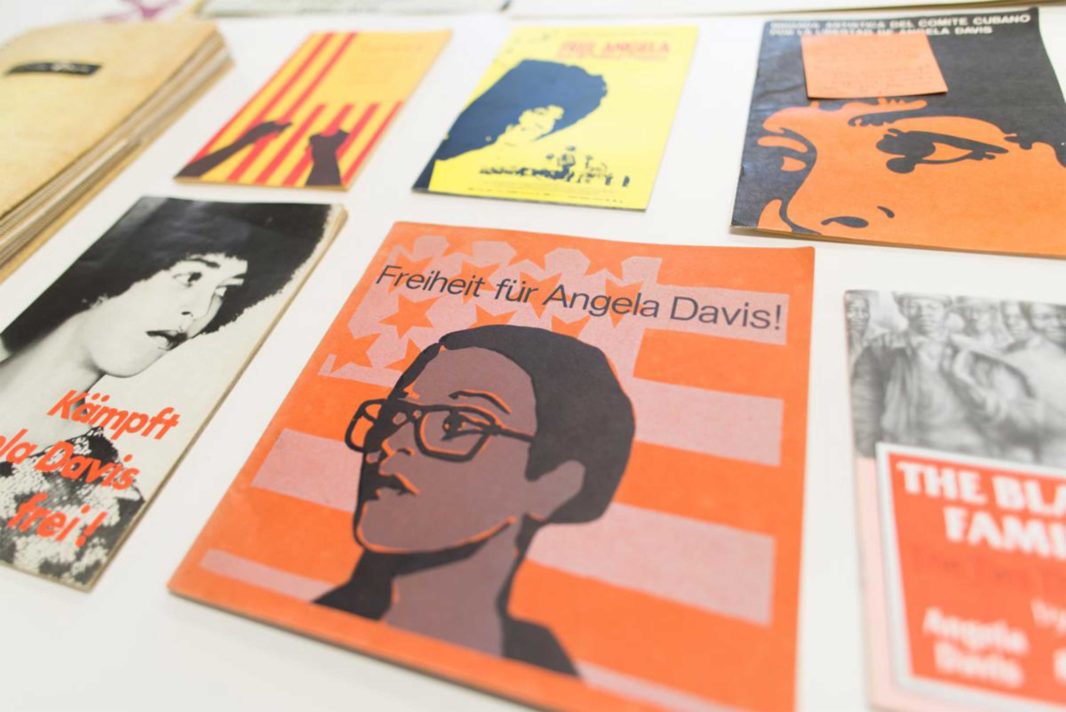
Schlesinger Library, Radcliffe Institute, Harvard University.
Angela Davis Archives
The Angela Davis Archives: In 2018, the Schlesinger acquired Davis’ archive of documents, letters, papers, photos and other items. These trace her history as an activist, author, educator and scholar. The archive holds a painting done for Davis by a death-row inmate in California and a manuscript of her autobiography with edits by Toni Morrison. Archivists will be documenting and digitizing the archive. This is in preparation for an exhibition and conference in October 2019 where Davis will discuss family, gender and issues around incarceration.
Papers of Maud Wood Park in the Woman’s Rights Collection: This collection started it all. 1898 Radcliffe graduate Maud Wood Park was heavily involved in the suffrage movement. She served as the first president of the League of Women Voters after the ratification of the 19th Amendment. Within her papers, you’ll find photographs of and from Park during her time at Radcliffe and throughout her career. One such is a picture of Jeannette Rankin, the first U.S. Congresswoman, arriving at the National American Woman Suffrage Association Headquarters in Washington, D.C.
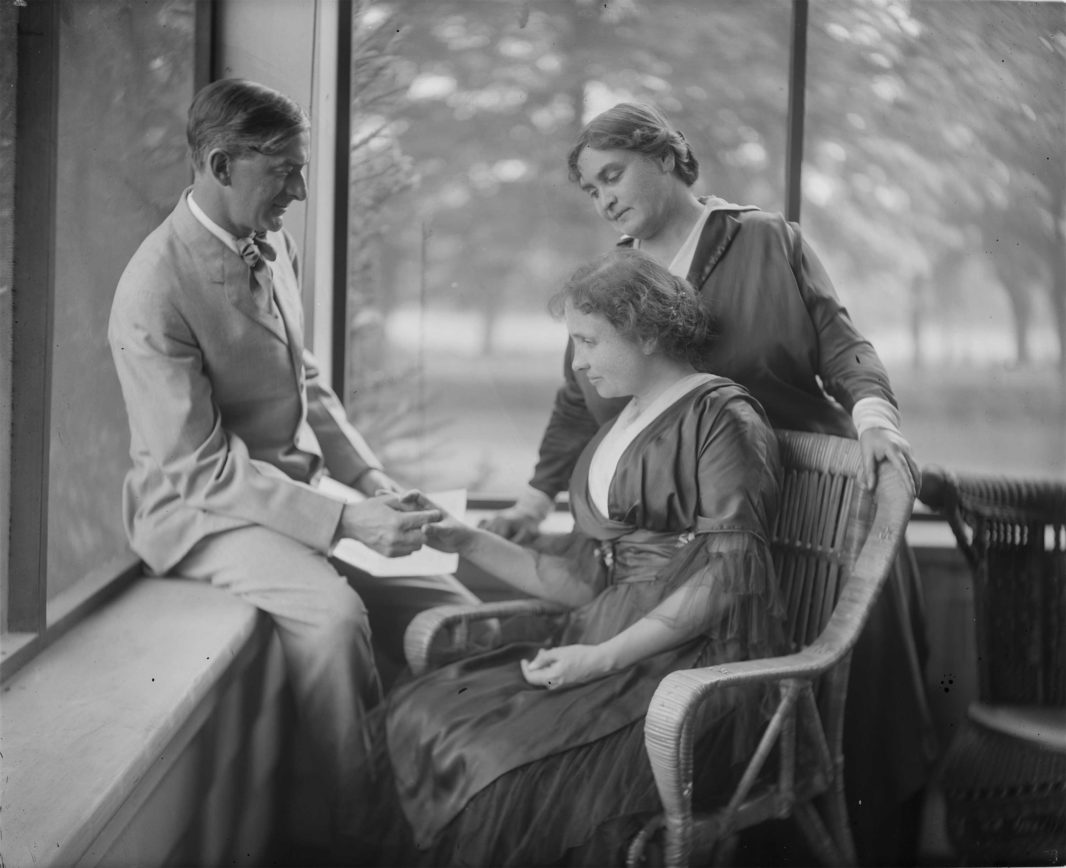
Schlesinger Library, Radcliffe Institute, Harvard University.
Portrait of Helen Keller with Annie Sullivan Macy and John Macy, ca. 1909-1919. Photographer: Whitman Studio, Chelsea, Mass
Helen Keller Papers: This eponymous lifelong advocate for people with disabilities graduated cum laude from Radcliffe in 1904. From there, she went on to launch an astounding career raising support for the blind worldwide, despite dealing with deafness and blindness herself. In the Schlesinger, find photographs of Keller from every period of her life. There are letters and newspaper clippings of her extraordinary achievements. A standout is the 1903 copy of her biography “The Story of My Life,” which features a portrait of Keller and Anne Sullivan. It also boasts a special inscription Keller wrote to Radcliffe.
Boston Women’s Health Book Collective Records: Get a taste of local history with the records of grassroots organization Boston Women’s Health Book Collective. It is aimed at advancing the health and rights of women and girls from 1969 to the present day — now called “Our Bodies, Ourselves.” A group of women who grew frustrated with the lack of available useful medical information began to educate themselves about their bodies. They eventually published a book with their findings. Here, you can find agendas and meeting notes from those early days, brochures from the organization, letters from readers and more.
The Photos of Jessie Tarbox Beals: Jessie Tarbox Beals was the Annie Leibovitz of the 19th century. She’s recognized as the first woman photographer hired on a newspaper staff. She also became a successful freelance celebrity photographer, with clients including President Theodore Roosevelt and his oldest son, Theodore Junior. She continued managing her career even after the birth of her daughter. In 1982, that same daughter donated all of Beals’ papers and photographs to the library. The collection shows the breadth of her work. It features not just portraits, but news photos, street scenes and garden shots that appeal to history and art lovers alike.



 3 min read
3 min read